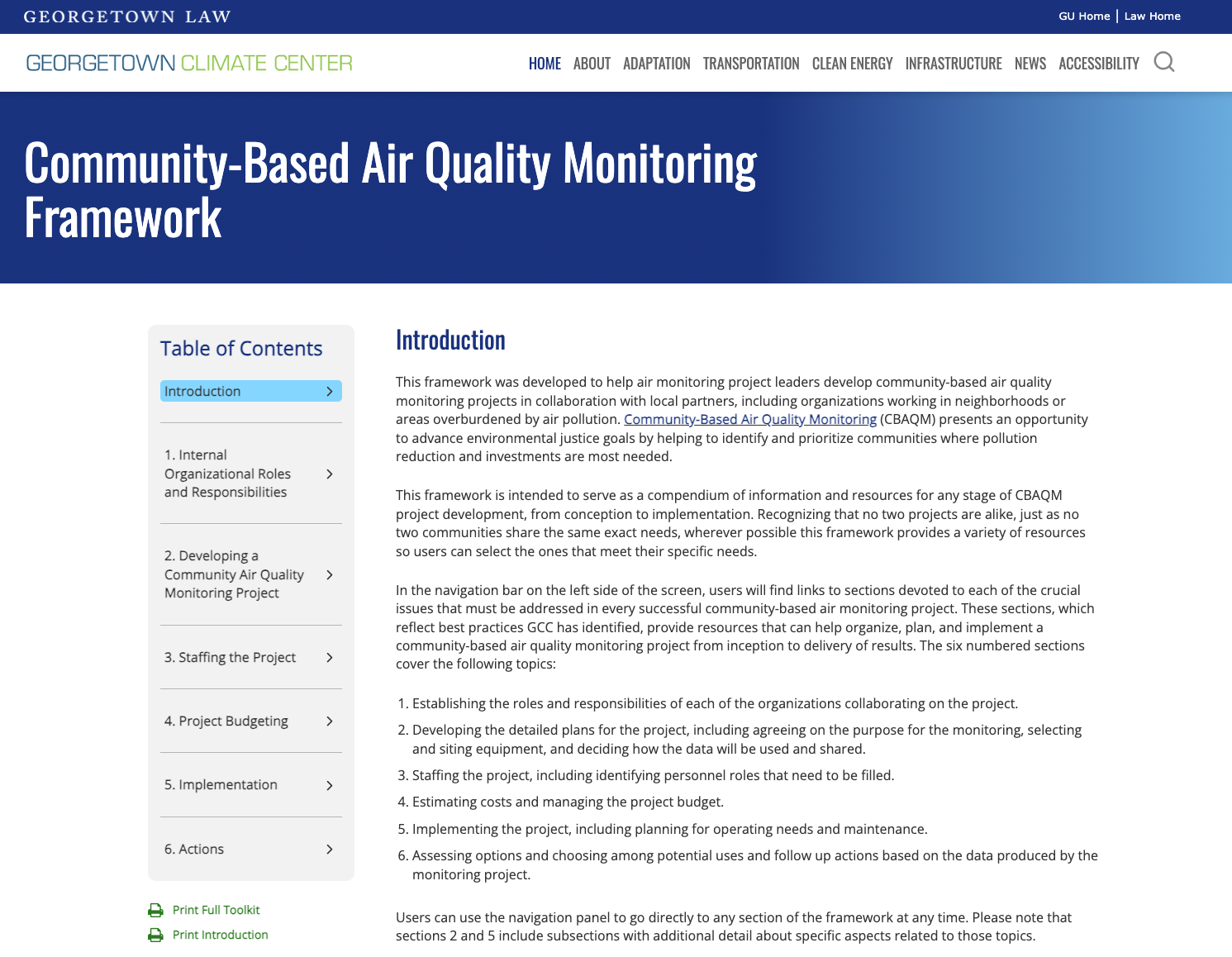Community-Based Air Quality Monitoring Framework
Wherever you are in the process of developing and running your community air quality monitoring program, the Community-Based Air Quality Monitoring Framework has you covered! The framework pulls together resources on all topics community air quality monitoring-related, from the very beginning of a project all the way through to sharing findings. We worked with the Georgetown Climate Center to support a workgroup of Northeast and Mid-Atlantic state air quality agencies with their partnerships with communities to establish air monitoring programs that reflect community priorities and lead to real and lasting improvements in air quality and public health.
This framework covers six categories of best practices when it comes to air quality monitoring:
Establishing the roles and responsibilities of each of the organizations collaborating on the project.
Developing detailed plans for the project, including agreeing on the purpose for the monitoring, selecting and siting equipment, and deciding how the data will be used and shared.
Staffing the project, including identifying personnel roles that need to be filled.
Estimating costs and managing the project budget.
Implementing the project, including planning for operating needs and maintenance.
Assessing options and choosing among potential uses and follow-up actions based on the data produced by the monitoring project.
The resources in the framework range from worksheets to checklists to selected readings from guidance documents, intended to provide both informational context and actions to take at different stages of a project. Air monitoring is a complex undertaking, and requires many thoughtful steps that this framework can help guide.
Looking for more support?

